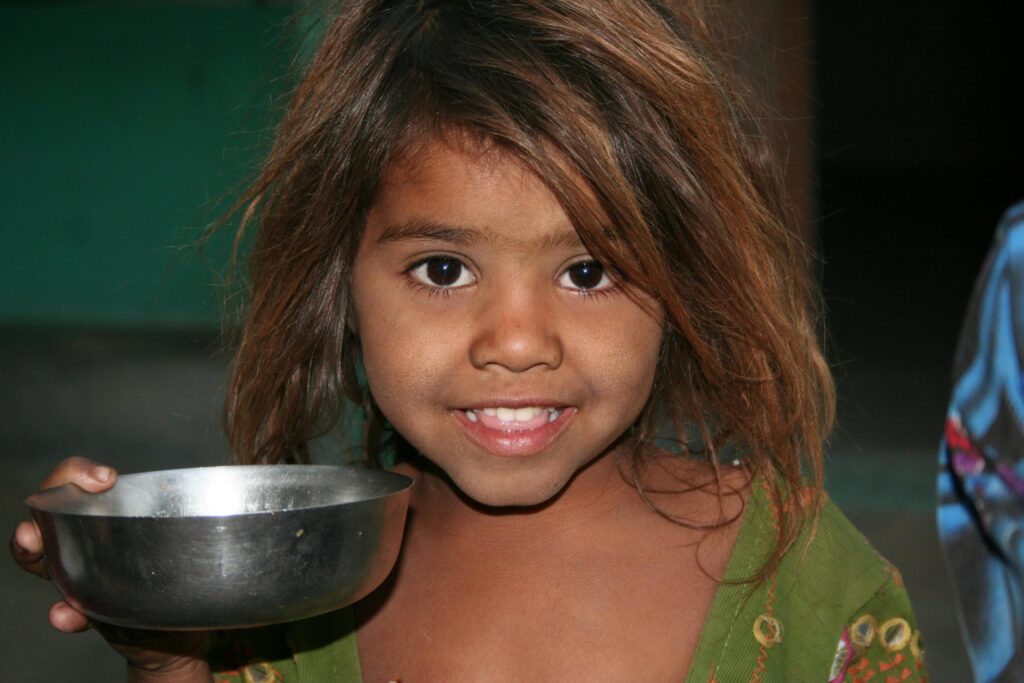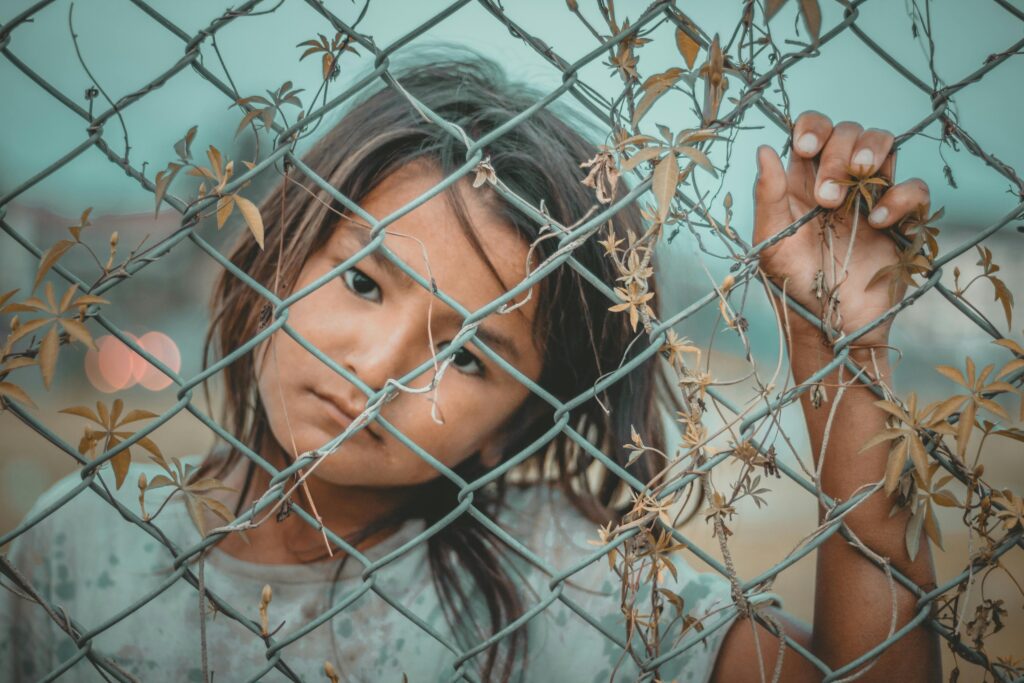Poverty and Malnutrition
A Global Crisis Exacerbated in Colombia

by Delia Visbal • August 2024
In the 5th edition of our newsletter, we explain how poverty exacerbates malnutrition in Colombian children and in children around the world.
Understanding the Link Between Poverty and Malnutrition
Malnutrition is a pervasive issue affecting millions of children globally, and its roots are deeply intertwined with poverty. In Colombia, the causes of child malnutrition are multifaceted, arising from a combination of socioeconomic, environmental, and health-related factors. Among these, poverty stands out as the most significant driver, creating a vicious cycle that is difficult to break.
Statistics Highlighting the Crisis
The statistics surrounding child malnutrition in Colombia are alarming. According to UNICEF, 10.8% of children under the age of five suffer from chronic malnutrition (stunting), and 3.3% suffer from acute malnutrition (wasting). These conditions not only impede physical growth but also affect cognitive development, leading to long-term detrimental effects on learning and earning potential.
Globally, the picture is similarly grim. The World Health Organization (WHO) reports that nearly 45% of deaths among children under five are linked to undernutrition. This underscores the severe impact of malnutrition on child mortality rates, further exacerbating the cycle of poverty and deprivation.
Root Causes of Poverty in Colombia
Poverty in Colombia is a complex and multifaceted issue that stems from a variety of historical, social, economic, and political factors. Despite being one of the more economically vibrant countries in Latin America, Colombia struggles with significant levels of poverty and inequality, contributing to its status as an underdeveloped country in several respects.
Historical Factors
1. Colonial Legacy: The colonial history of Colombia laid a foundation of social and economic inequality. Land distribution has historically been skewed, with a small elite controlling vast swathes of arable land, leading to enduring economic disparities.
2. Internal Conflict: Decades of armed conflict, involving government forces, guerrilla groups, and paramilitaries, have caused massive displacement, disrupted economic activities, and strained national resources. This conflict has displaced millions of people, pushing them into poverty and limiting their access to education, healthcare, and employment opportunities.
Social and Economic Factors
3. Inequality: Colombia has one of the highest levels of income inequality in the world. According to the Gini coefficient, a measure of income inequality, Colombia ranks among the most unequal countries globally. This inequality translates into limited access to resources and opportunities for a significant portion of the population.
4. Unemployment and Informal Employment: High unemployment rates and a large informal economy mean that many Colombians work in low-paying, unstable jobs without social security benefits. This precarious employment situation contributes to persistent poverty.
5. Limited Access to Education: Although there have been improvements in education, access to quality education remains unequal, particularly in rural and conflict-affected areas. A lack of education limits job prospects and perpetuates the cycle of poverty.
6. Health Disparities: Access to healthcare is uneven, with rural and marginalized communities facing significant barriers. Poor health outcomes and lack of access to healthcare services exacerbate poverty, as individuals and families are unable to work or attend school.
Environmental and Infrastructure Factors
7. Suboptimal rural infrastructure: Many rural communities are geographically isolated, with limited infrastructure connecting them to major economic centers. This isolation hampers access to markets, education and healthcare, contributing to persistent poverty.
8. Natural Disasters: Colombia is prone to natural disasters such as floods, landslides, and earthquakes, which can devastate communities and disrupt economic activities, pushing vulnerable populations deeper into poverty.
Political Factors
9. Corruption: Corruption at various levels of government undermines efforts to alleviate poverty. Resources intended for development and social programs are often siphoned off, reducing their effectiveness and reach.
10. Weak Institutions: Weak governance and institutional capacity limit the effectiveness of poverty alleviation programs and policies. This includes inefficiencies in the implementation of social welfare programs and inadequate support for marginalized communities.

Poverty is a root cause of malnutrition, but its impacts extend far beyond the immediate lack of food. It creates a complex web of issues that compound the problem, making it difficult for families to escape the cycle of deprivation. This interconnection of factors not only deepens the problem of malnutrition but also makes addressing it a multi-faceted challenge that requires a comprehensive approach.
• Food Security: inconsistent access to affordable and nutritious food.
• Healthcare Access: Lack of the necessary medical attention to prevent and treat malnutrition such as vaccination programs, prenatal and postnatal care, and regular health check-ups.
• Educational Programs: lack of educational programs that focus on nutrition and health practices that can equip parents with the knowledge needed to provide better care for their children. Schools that offer nutrition education and healthy meals.
Global Commitment: United Nations 2030 Development Goals
One of the United Nations’ 2030 Sustainable Development Goals (SDGs) is “No Poverty” (Goal 1), which aims to eradicate extreme poverty for all people everywhere. This goal includes targets such as ensuring equal rights to economic resources, access to basic services, and implementing social protection systems. Achieving this goal requires concerted efforts from national governments, international organizations, and civil society to address the underlying causes of poverty and promote inclusive development.
By addressing the root causes of poverty and implementing comprehensive strategies, Colombia can make significant progress toward reducing poverty and eradicating malnutrition, thereby improving the lives of millions of its children.
The Global Fight Against Malnutrition
Addressing child malnutrition requires a comprehensive approach that tackles its root causes. Another of the United Nations’ 2030 Sustainable Development Goals (SDGs) is “Zero Hunger,” aiming to end hunger, achieve food security, improve nutrition, and promote sustainable agriculture. Achieving this goal necessitates concerted efforts across various sectors and at multiple levels.
In conclusion, malnutrition is both a cause and a consequence of poverty, creating a cycle that is difficult to break without comprehensive intervention. In Colombia, as in many parts of the world, addressing this issue requires a multifaceted approach that tackles the socioeconomic, environmental, and health-related factors contributing to malnutrition. However, by supporting the efforts of organizations like NEACOL, we can make significant strides in improving the lives of children and breaking the cycle of malnutrition. If you want to support NEACOL to eradicate hunger and malnutrition in Colombian children, click here to donate.
Every year, NEACOL opens a call for proposals for organizations that work to improve the living conditions of Colombian children up to 18 years old in the areas of health, nutrition and education.. This year’s call for proposals is already closed, as we have already received the letters of intent and are currently in the process of selecting the organizations that will be invited to submit a full proposal. The organizations selected this year will receive financial resources from NEACOL to continue executing their nutrition programs.
Help us support Colombian children in need. Your contribution will help us continue to work for this cause. Click here to donate.
Thank you for helping us fight Colombian children’s malnutrition.
